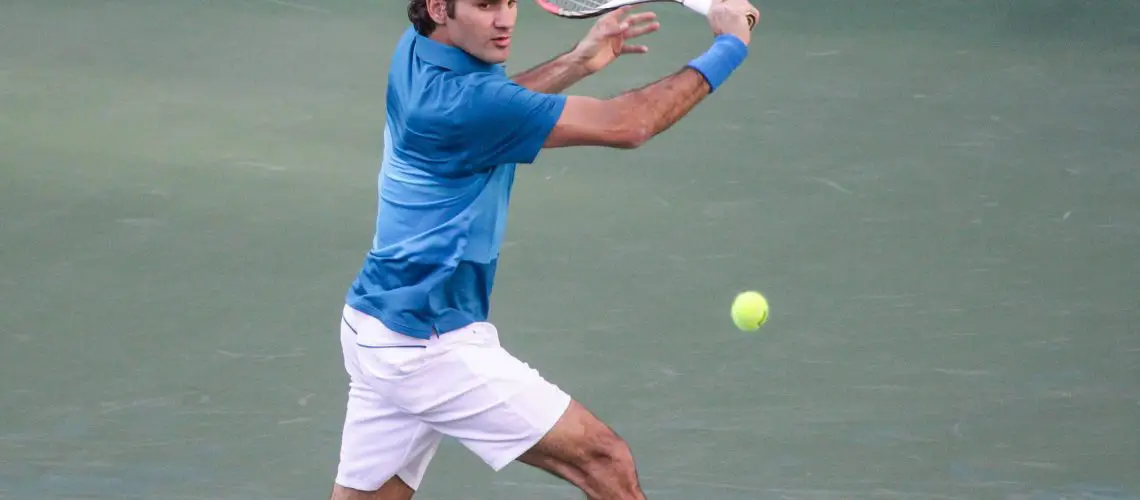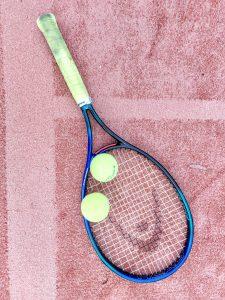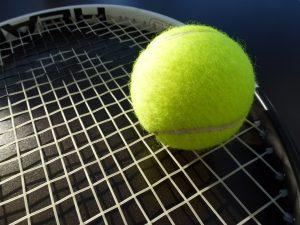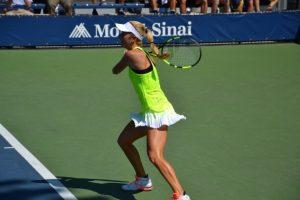We may earn money or products from the companies mentioned in this post.
Introduction

Picture this: you’ve just finished doing laundry, and now it’s time to dry your clothes As you load your trusty dryer with damp garments, have you ever considered adding tennis balls to the mix? Yes, those same fuzzy yellow spheres used in the game of tennis can actually be used in dryers too Intriguing, isn’t it? In this article, we’ll explore the benefits of using tennis balls in dryers and why finding alternatives might be a good idea
Brief Explanation of the Use of Tennis Balls in Dryers
Let’s start by diving into the world of dryer efficiency When you toss a couple of tennis balls into your dryer alongside your wet laundry, magic happens Well, not actual magic per se, but something close enough! The tumbling motion of the dryer causes the tennis balls to bounce around and create air pockets within the clothes These air pockets allow for better airflow and heat distribution throughout the load
1
Benefits of Using Tennis Balls in Dryers:
a Faster Drying Time: With improved airflow and heat distribution, your clothes are bound to dry faster than usual This means less time waiting around for that favorite pair of jeans or that cozy sweater to be ready for wear again
b Reducing Wrinkles and Static Cling: Nobody likes wrinkly clothes or getting zapped by static electricity when putting on freshly dried garments The bouncing action of tennis balls helps prevent wrinkles from setting in while also reducing static cling
c Fluffing Items Like Pillows, Comforters, and Jackets: Ever noticed how pillows flatten over time or how comforters lose their fluffy appeal after being washed? Fear not! By adding tennis balls to the dryer, you can give these items a little fluffing boost, restoring their plumpness and coziness
Importance of Finding Alternatives to Tennis Balls in Dryers
While tennis balls do offer some advantages when it comes to drying laundry, it’s essential to consider potential issues that may arise Here are a few reasons why finding alternatives might be worth exploring:
1
Potential Issues with Using Tennis Balls in Dryers:
a Noise Pollution During the Drying Cycle: Let’s face it; dryers aren’t exactly known for their serenity Adding tennis balls into the mix can amplify the noise level during the drying cycle, making it less enjoyable for those nearby
b Chemical Concerns Due to Rubber Materials: Tennis balls are typically made from rubber, and while they may seem harmless, there can be chemical concerns associated with prolonged exposure to rubber materials in high heat environments
c Possible Damage to Delicate Fabrics: Although tennis balls work wonders for certain fabrics like towels or denim, they may not be suitable for delicate items such as silk or lace The constant bouncing and tumbling action of the balls could potentially cause damage or snag delicate fibers
Alternative Options for Tennis Balls in Dryers: Advantages and Disadvantages

Dryer Balls (Wool or Plastic)
Dryer balls are a popular alternative to using tennis balls in dryers They offer several advantages that make them a great choice for many households
-
Eco-friendly option:
Dryer balls are typically made from natural materials like wool or eco-friendly plastics, making them a more sustainable choice compared to single-use tennis balls -
Reduces drying time, static cling, and wrinkles:
One of the key benefits of dryer balls is their ability to help clothes dry faster By bouncing around in the dryer, they create space between garments, allowing hot air to circulate more efficiently This not only reduces drying time but also helps minimize static cling and wrinkles -
Safe for sensitive skin:
Unlike tennis balls that may contain chemicals or dyes, dryer balls made from natural materials are safe for those with sensitive skin or allergies They provide a chemical-free alternative while still achieving the desired results
However, there are a few disadvantages associated with using dryer balls as well
-
Some find them noisy:
While dryer balls are generally quiet during operation, some people may find the noise they produce bothersome This can be particularly noticeable if you have an open-floor living space or if you prefer doing laundry during quiet hours -
May not be as effective on extra-large loads:
If you often launder large loads of laundry in your dryer, dryer balls may not be as effective at creating enough space between garments for optimal drying In such cases, you may need to use additional dryer balls or consider alternative options
Aluminum Foil Balls
Another alternative option for tennis balls in dryers is using aluminum foil balls, which can offer their own set of advantages and disadvantages
-
An inexpensive alternative:
Creating aluminum foil balls is a cost-effective solution since you can easily make them at home using readily available materials This makes them a budget-friendly option compared to purchasing dryer balls or tennis balls -
Helps reduce static cling:
Similar to dryer balls, aluminum foil balls can help minimize static cling during the drying process The crinkled surface of the foil creates friction that prevents clothes from sticking together and producing static electricity
However, there are a couple of downsides to using aluminum foil balls as well
-
Not reusable long-term:
Unlike dryer balls that can be used for multiple loads, aluminum foil balls tend to lose their effectiveness over time and may need to be replaced more frequently This means they are not as sustainable or long-lasting as other alternatives -
Does not aid in softening clothes or reducing wrinkles:
While aluminum foil balls may help with reducing static cling, they do not provide the same softening effect as dryer sheets or certain fabric softeners Additionally, they may not contribute much towards minimizing wrinkles in your laundry
In conclusion, both dryer balls (wool or plastic) and aluminum foil balls offer unique benefits and drawbacks when used as alternatives for tennis balls in dryers Consider your specific needs and preferences before choosing the best option that suits your laundry routine
Common Questions About Using Alternatives to Tennis Balls in Dryers

How many alternatives should I use per load?
When it comes to using alternatives to tennis balls in your dryer, the quantity you should use per load depends on the type of alternative you choose Let’s explore some suggested quantities for different types of alternatives:
-
Dryer Balls:
Typically, two to four dryer balls are recommended per load These balls are designed with nubs or spikes that help fluff and separate fabrics during drying -
Clean Tennis Shoes:
If you decide to go with clean tennis shoes as an alternative, using one or two pairs per load can provide similar benefits to dryer balls -
Aluminum Foil Balls:
For those who prefer a budget-friendly option, aluminum foil balls can be used instead Simply crumple up a few pieces of foil into tight balls and add them to the dryer Aim for around three to five foil balls per load
Can I mix multiple alternative options together?
If you’re feeling adventurous and want to experiment with different alternatives, mixing them together is certainly an option However, it’s important to consider the potential benefits or drawbacks that may come with combining methods
The benefit of mixing multiple alternatives is that you might experience enhanced results in terms of reducing static cling, softening fabrics, and decreasing drying time For example, adding both dryer balls and clean tennis shoes can provide a double dose of fabric agitation and fluffing
On the other hand, combining certain materials might lead to unintended consequences For instance, tossing aluminum foil balls along with dryer sheets could cause the foil to tear or create sparks due to the interaction of the metal and static electricity It’s crucial to exercise caution and observe any unusual behavior during the drying process
Are these alternative options safe for all fabric types?
When using alternatives to tennis balls in dryers, it’s important to consider the compatibility with various fabric types
Generally, dryer balls, clean tennis shoes, and aluminum foil balls are safe for most fabrics However, there are a few exceptions:
-
Delicate Fabrics:
Delicate fabrics such as silk or lace might be best left out of the dryer altogether or placed in a mesh bag to protect them from potential damage caused by dryer balls or other alternatives -
Fabrics Prone to Pilling:
If you’re dealing with fabrics that tend to pill easily, like wool or acrylic blends, it’s advisable to avoid using alternatives that could potentially increase friction
Always refer to the care instructions on your clothing labels before using any alternative method in your dryer When in doubt, it’s wise to test a small area first or consult with a professional cleaner
Conclusion: Choosing the Best Alternative for Your Needs

When it comes to selecting an alternative for traditional laundry drying methods, several factors come into play These factors will help you determine the best option that suits your unique needs and preferences
Determining Factors When Selecting an Alternative
1 Personal Preferences:
Your personal preferences play a significant role in choosing the right alternative Are you someone who prefers to air dry their clothes or do you prefer the convenience of a dryer? Consider what method aligns with your lifestyle and preferences
2 Environmental Concerns:
If sustainability is important to you, consider alternatives that are eco-friendly and energy-efficient Look for options that use renewable energy sources or consume less electricity, reducing your carbon footprint
3 Budget Constraints:
Your budget is another crucial factor when selecting an alternative While some methods may require upfront investments, they could potentially save you money in the long run by reducing energy consumption and extending your clothes’ lifespan
4 Specific Fabric Types in Your Laundry:
The type of fabrics you regularly launder should also influence your decision-making process Delicate fabrics might require gentler drying methods, while thicker materials may benefit from higher heat settings or specialized techniques
Recommendations for Best Results with Your Chosen Alternative
1 Proper Usage and Maintenance of the Alternative Option:
To ensure optimal results with your chosen alternative, it’s essential to follow usage instructions carefully and maintain equipment regularly This will maximize efficiency and prolong its lifespan, providing consistent performance over time
2 Tips for Ensuring Optimal Drying Results and Fabric Care:
No matter which alternative method you choose, there are general tips you can follow to achieve the best drying results and care for your fabrics These include sorting laundry by fabric type, avoiding overloading the drying equipment, using appropriate temperature settings, and removing clothes promptly to minimize wrinkles
By considering these determining factors and implementing our recommendations, you’ll be well-equipped to choose the best alternative for your laundry needs Whether it’s air-drying, using a clothesline or rack, or investing in energy-efficient dryers, your decision will align with your preferences while promoting environmental sustainability and optimal fabric care
Useful Links

Why You Should Put Tennis Balls in Your Dryer
10 DIY Nontoxic Alternatives to Dryer Sheets
No-Cost Dryer Balls
Does the Tennis Balls in Dryer Trick Really Work to Soften …
What are some alternatives to wool dryer balls?
Things To Use Instead Of Tennis Balls In The Dryer en 2023
THEREFORE you should add a Tennis Ball to your laundry …
Laundry Hacks – dryers and towels and tennis balls, oh my!
Add a Tennis Ball in Your Dryer For Softer Clothes
The Best Dryer Balls of 2023 – Reviewed – USA Today
Tennis balls in the dryer, what’s the catch? : r/laundry
What To Use Instead Of Tennis Balls To Dry Pillows at Ramon …
Using Tennis Balls in the Dryer
How To Fluff Pillows In Dryer Without Tennis Balls?
Can you really use tennis balls in the dryer to soften clothes?
TENNIS BALL DRYER
Tennis Balls Make Better Dryer Balls
Do Tennis Balls Help in the Tumble Dryer?
What can I use instead of a tennis ball?






